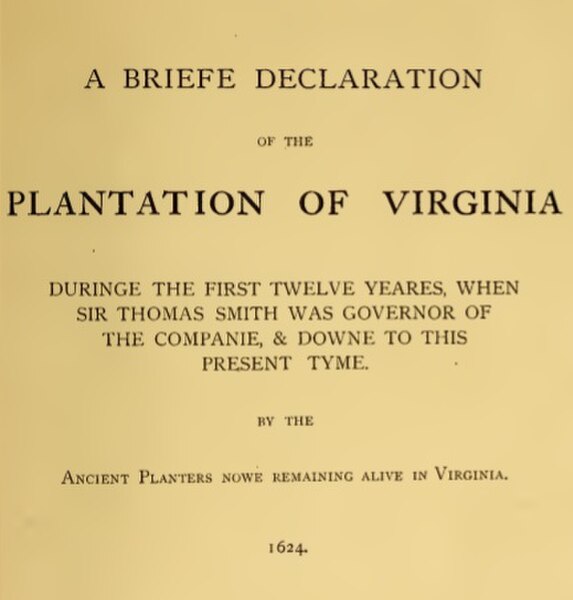The Indian massacre of 1622 took place in the English colony of Virginia on 1 April [O.S. 22 March] 1622. English explorer John Smith, though he was not an eyewitness, wrote in his History of Virginia that warriors of the Powhatan "came unarmed into our houses with deer, turkeys, fish, fruits, and other provisions to sell us"; they then grabbed any tools or weapons available and killed all English settlers they found, including men, women, and children of all ages. Opechancanough, chief of the Powhatan Confederacy, led a coordinated series of surprise attacks that ended up killing a total of 347 people — a quarter of the population of the Colony of Virginia.
1628 engraving of the massacre by Matthäus Merian the Elder
The Colony of Virginia was an English, later British, colonial settlement in North America between 1606 and 1776.
The Indian massacre of 1622, depicted in a 1628 woodcut
Cover to a history of the Plantation of Virginia between 1612 and 1624, compiled by its planters
Lines showing the legal treaty frontiers between the Virginia Colony and Indian Nations in various years and today's state boundaries. Red: Treaty of 1646. Green: Treaty of Albany (1684). Blue: Treaty of Albany (1722). Orange: Proclamation of 1763. Black: Treaty of Camp Charlotte (1774). The area west of this line in present-day Southwest Virginia was ceded by the Cherokee in 1775.
Hanover County Courthouse (c. 1735–1742), with its arcaded front, is typical of a numerous colonial courthouse built in Virginia.




